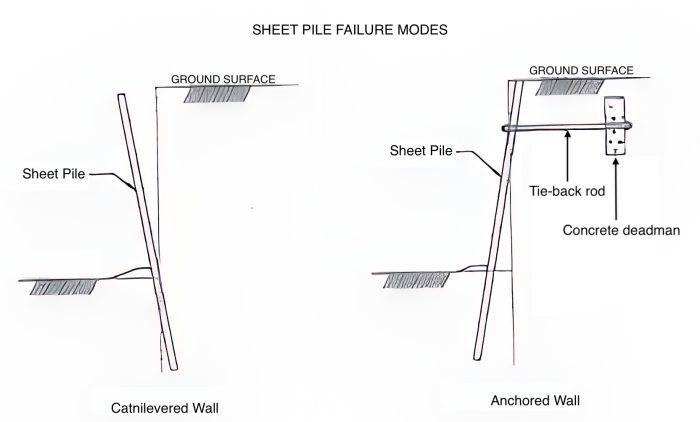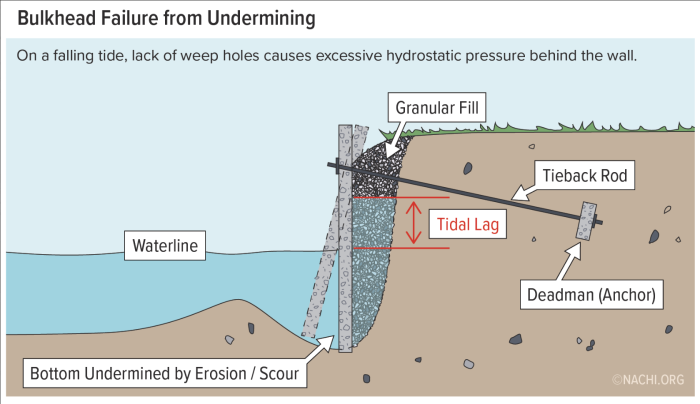Sheet Pile Failure Modes
Rotational Failure
Sheet piles are exposed to significant lateral forces both from the weight (and sometimes expansion) of soil, and of pressure created behind the wall from the weight of accumulated water.

Cantilevered walls typically fail because ground penetration depth is inadequate for the soil type.
Anchored walls typically fail because:
- Corrosion has caused the tie-back rod or its connections to the bulkhead or deadman to corrode through, or
- The deadman was of inadequate design (size or weight) to resist the lateral forces to which the wall is exposed.
Both cantilevered and anchored walls may fail because changes in upland conditions resulted in forces exceeding the design limitations of the wall system. or
because of poor wall design/construction:

In this illustration, lack of weep holes through the wall that– if present– would allow water behind the wall to drain with a falling tide has resulted in the development of tidal lag. Tidal lag causes increased hydrostatic pressure behind the wall that can cause outward rotation of the wall base when toe (soil at the base of the wall) erosion reduces wall embedment depth to the point of failure. Toe erosion may b e caused by bottom scouring by alongshore currents, or by wave action.
Rotational failure of the wall base may be the result of a combination of factors, including current velocity, soil characteristics, bulkhead design, failure to inspect the bulkhead on an adequate schedule, or changing environmental factors.
